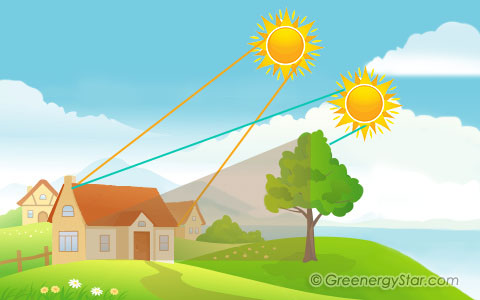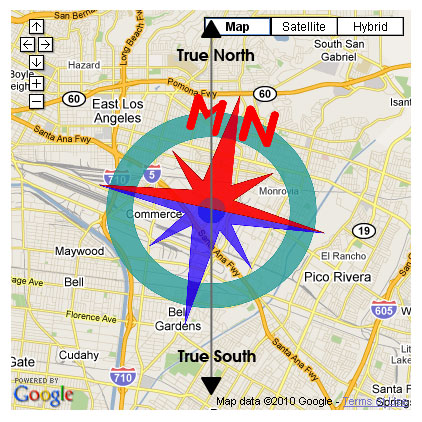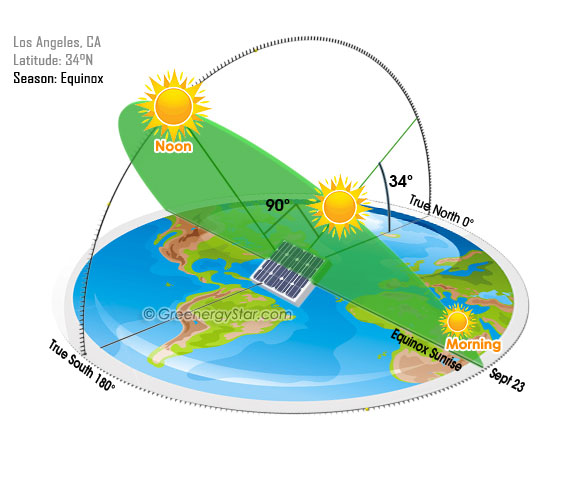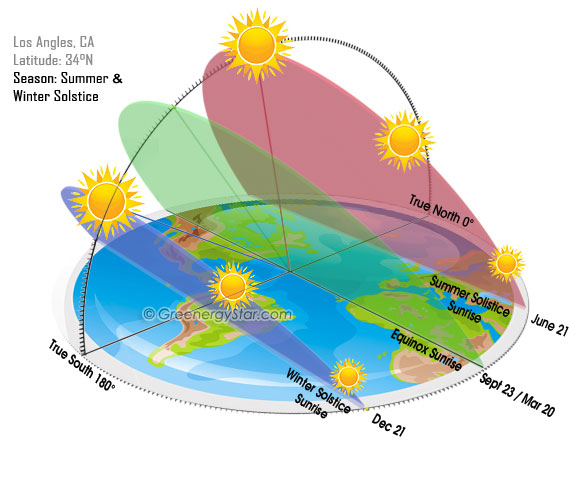By GreenergyStar.com August 25, 2010
In this week’s GreenergyStar Report, we will investigate optimum site location, orientation, and tilt angle toward the sun to maximize our energy harvest with solar panels.
So how do we use solar panels to collect solar energy? “Easy. Just put ‘em under the sun and it will do its job. Common sense.” …Wrong. Without proper orientation and tilt angle toward the sun, the performance of solar panels is going to suffer.
“Does it really matter? Why do we care?”
Let’s think of this as an investment. Your solar project will need to pay for itself before it can generate revenue. And of course we would like the break even period to be as short as it can while Return On Investment (ROI), on the other hand, to be as great as possible.
“Ok, I am convinced. So how do we do it?”
There are three things we need to look at before installing our solar panels. First, we need to find a suitable site. This location should be shade-free and preferably has a higher elevation than its surrounding obstacles. One preferred location will be the roof top.
“Hey, what if I have trees that are taller than my house?”
Good question. Generally, we will try to avoid shades casted by higher obstacles. If they are unavoidable, then we need to minimize the effect they have by adjusting the angle of the solar panels. Please note the shadow casted by a higher obstacle will be very different between summer and winter and careful consideration will need to be taken when choosing a suitable site. And finally, if your area is completely covered, maybe it is a better idea to find a better location.

“I found myself a site now, what’s next?”
With a suitable site, the next thing is to determine which direction your solar panels should face. If you live in the Northern Hemisphere, during summer you will notice the sun rise from the northeast, increase in elevation (angle to horizon) and moves toward true south as it reaches “solar” noon. Then it will set in the northwest. During winter, the sun will rise in the southeast, reaches solar noon in true south, and sets in the southwest. Therefore, we should point our panels to True South for maximum annual exposure. On the other hand, if you are in the Southern Hemisphere, then you should point your panels to true north.
“But what is TRUE south? Shouldn’t we just follow our compress?”
Unfortunately no. True south/north is different from magnetic south/north. True south (aka geographic south) is the direction towards South Pole. Magnetic south is the direction towards the magnetic pole – Earth’s axis of rotation. With a compress, it will point you to the magnetic south, and therefore we will need to account for this magnetic declination error. Let’s take an example:
Los Angeles, CA: Latitude 34° 3' N; Longitude 118° 14' W

Compass shows an approximation of the magnetic north (MN)
Declination = 12° 40' E changing by 0° 5' W/year
With declination being 12° 40' E, the true north and south is therefore 347.3° (360°-12.66°) and 167.3° (180°-12.66°) repectively.
To find True South at your local area, we can use The National Oceanic and Atmospheric Administration (NOAA)’s Magnetic declination calculator.
As a side note, there are other ways to find true north/south and will be discussed in later reports.
Next, we will need top optimize the angle for our array because the performance of PV module is at maximum when its surface is perpendicular to sunlight. In the Northern Hemisphere, the sun will reach its greatest height at noon on the summer solstice (June 21) and lowest on the winter solstice (Dec 21). The elevation angle will vary depending on the location’s latitude. Back to our example, in Los Angels, California (Latitude 34° 3' N), the solar noon elevation will span from 11.0° to 57.8°.
Ideally, if we want to capture the most sunlight on a yearly basis, we will tilt the panel to the sun’s “average” elevation, which is equal to the latitude of your location. In our example, the arrays should be tilted at about 34° from the ground and oriented to true south.
Optimum Tilt (Equinox)
The green area depicts the path of the sun during the spring and fall equinoxes.

Of course, there are always exceptions. If your area has overcast winters and sunny summer then you will probably want to lower that angle to optimize for summer exposure. Another option is to use adjustable mount. The rule of thumb is to minus 15° from your location’s latitude in summer and plus 15° to latitude in winter. Adjusting twice a year on spring and fall will roughly increase efficiency by 5%.

“I want to install solar panels on my roof, but what if it is not facing true south and the roof pitch is not the same as the latitude?
Don’t worry, this should not discourage you from going green. Statistics has shown, a panel that is 30° off true south will typically still has over 95% efficiency. And if it is 15° off from that latitude, it will usually suffer less than 5% loss in energy production. For visual reasons and to reduce wind loads, it is recommended to mount the panels parallel to the roof.
In a nutshell, careful consideration should be taken on orientation, tilt angle and array sitting during the design & planning phase to maximize the ROI of your solar system.
© Copyright (c) GreenergyStar.com
|